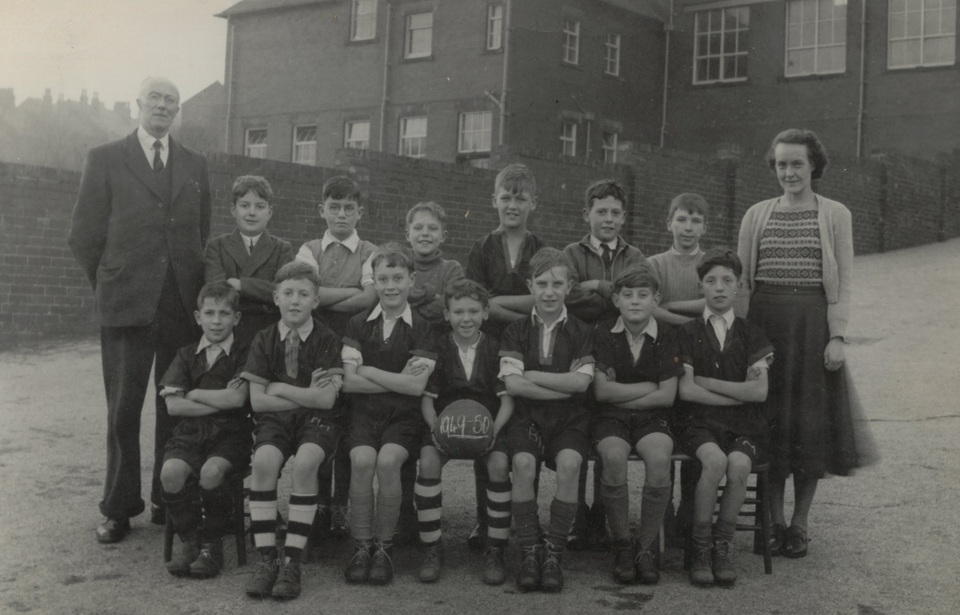Nationalisation, 1947
After the Second World War, the British government made major changes to how the country was run. One of these changes was nationalisation, where the government took control of major industries, making them publicly owned. This included the coal industry, where over £164 million was paid out as compensation to the mines’ owners. The National Coal Board (NCB) was established in 1947. On 1 January, known as “vesting day” (nationalisation of the coal industry), the NCB took over at least 1,000 mines, including Elsecar Main Colliery and the New Yard workshops. The aim was to manage the coal industry in a more standardised way andensure fair wages and safe working conditions. The gates of each mine had a sign which read “This colliery is now managed by the National Coal Board on behalf of the people.” Many workers thought nationalisation was a good thing with the shift in focus from profits to workers’ welfare.

National Coal Board era
The NCB modernised the coal industry by increasing the use of machinery. This allowed for deeper and wider coal seams to be accessed and led to a rise in coal extraction. As a result, Elsecar flourished as a mining village, with shops and pubs opening up to cater to the mining community’s needs and spending. During the NCB period, there were changes to the purpose and function of several workshops and stores in the New Yard. By the 1980s, the NCB faced challenges like declining coal demand and industrial disputes. In October 1983, Elsecar Main Colliery was closed due to decreasing coal reserves, followed by the closure of the railway branch line in 1984. On the last working day for Elsecar Main, the miners were transported by bus to different mines in the area such as Cortonwood, Barnburgh, Silverwood and Maltby Colliery. Elsecar New Yard, serving as NCB workshops, remained operational after the miner’s strike of 1984-5 for a short period. It eventually closed in late 1985 due to lack of demand for its facilities as neighbouring collieries closed.
1984 to 1985 miners' strike
In early March 1984, the government announced the closure of 20 collieries. On 5 March miners at the Cortonwood Colliery near Rotherham staged a walkout after the NCB announced the colliery’s closure, with further walkouts following across the country. The year-long national strike that followed was a bitter industrial dispute between thousands of miners and the government, leaving a profound impact on villages, communities and families. The strike ended on 3 March 1985 and miners returned to work two days later. After the strike ended, large numbers of miners found themselves out of work due to the closure of pits. The last UK’s deep coal mine, Kellingley Colliery in North Yorkshire, closed in December 2015.
These memories have been collected from individuals who experienced or observed the strike firsthand.
The government announced the closure of 20 collieries, March 1984. On 5 March 1984, miners at the Cortonwood Colliery near Rotherham staged a walkout after NCB announced closure of the colliery. Before the strike, miners were allocated a coal allowance but the NCB stopped the deliveries during the strike. Striking miners were forced to go coal picking from the spoil heaps. They would dig into the ground creating an open cast area to collect free coal. The coal would then be bagged up and transported back home to use in the house. Strike breakers were taken by bus accompanied by a police van convoy to the colliery. Local businesses supported the striking miners by providing free food for them.
We used to get a £1 a day picketing, we used to go all over as flying pickets.
It were desperate times for miners. Kenneth O’Mara (2024), Building Bridges project interviewee.
It was a very hard time for miners, their families and the community. The strike ended on 3 March 1985. The miners returned to work on 5 March 1985. After the strike ended, large numbers of miners found themselves out of work due to the closure of pits. Some mining towns are still experiencing the effects of the strike many years later. The last UK’s deep coal mine, Kellingley Colliery in North Yorkshire, closed in December 2015.
It takes a village
Work was a large part of life in Elsecar but social, sporting and community activities were hugely important. Pubs, welfare clubs and community halls were popular places to relax, socialise and celebrate. Sports such as football and cricket were popular amongst the miners. Elsecar Athletic was formed in the early 1900s and first entered the FA Cup in 1906. The team name changed to Elsecar Main in 1908 reflecting its mining connections, but the team was disbanded in 1911.
Elsecar Cricket Club was established in 1854 by a group of people in the Milton public house. They had many successes over the years including winning the Wake Challenge Cup and Hallamshire League. The cricket home ground is in Elsecar Park. During the 1984-5 strike, a soup kitchen was set up at the cricket club to support striking miners and their families.
.jpg)